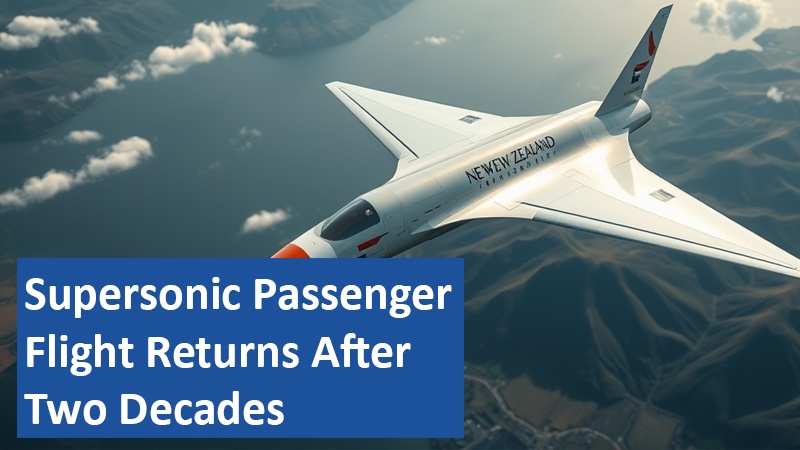For the first time in over 20 years, a civilian aircraft has surpassed the sound barrier. The rocket-powered Mk-II Aurora, developed by Dawn Aerospace, reached Mach 1.1 during a test flight. This milestone marks a major step forward in the revival of supersonic travel.
By Aubree Ross
Breaking the Supersonic Silence

The Mk-II Aurora’s achievement comes after a long hiatus in civilian supersonic aviation. The Concorde, which conducted its final commercial flight on October 24, 2003, was the last passenger aircraft to operate at supersonic speeds. The experimental Mk-II Aurora broke that silence on November 12, 2024, during a test flight at over 15.5 miles above the Earth’s surface. Using a rocket engine with a thrust-to-weight ratio 20 times greater than conventional jet engines, the Mk-II demonstrated its advanced capabilities.
Record-Breaking Performance
In addition to breaking the sound barrier, the Mk-II Aurora set a new record for climbing to an altitude of 12.4 miles in just 118.6 seconds. This surpassed a record previously held by a modified F-15 aircraft since the 1970s. The test flight, conducted near Mount Cook in New Zealand, showcased the Mk-II’s groundbreaking efficiency and speed. The Mk-II is also notable for being the first supersonic aircraft entirely designed and built in New Zealand.
Small Scale, Big Ambitions
While the Mk-II Aurora is an impressive technical achievement, it is far from the scale of the Concorde. With a wingspan of just 13 feet and a dry weight of 48.5 pounds, the Aurora is still an experimental aircraft. Dawn Aerospace aims for future versions to fly at Mach 3.5, potentially carrying payloads to the edge of space at 62 miles above Earth. These ambitions could pave the way for advancements in satellite deployment and the revival of civilian supersonic flight.
The Road Ahead for Supersonic Aviation
Supersonic travel for civilian purposes remains rare and challenging, particularly due to issues like sonic booms and fuel efficiency. Companies and governments are exploring solutions, such as the NASA-Lockheed X-59 project, which aims to produce a quieter sonic boom. These efforts reflect growing interest in commercializing supersonic technology, despite setbacks like the recent bankruptcy of Exosonic. The future of supersonic passenger aviation will depend on overcoming these hurdles.
The return of civilian supersonic flight raises fascinating possibilities for the future of travel and technology.
Based on information from www.futurezone.at and own research.